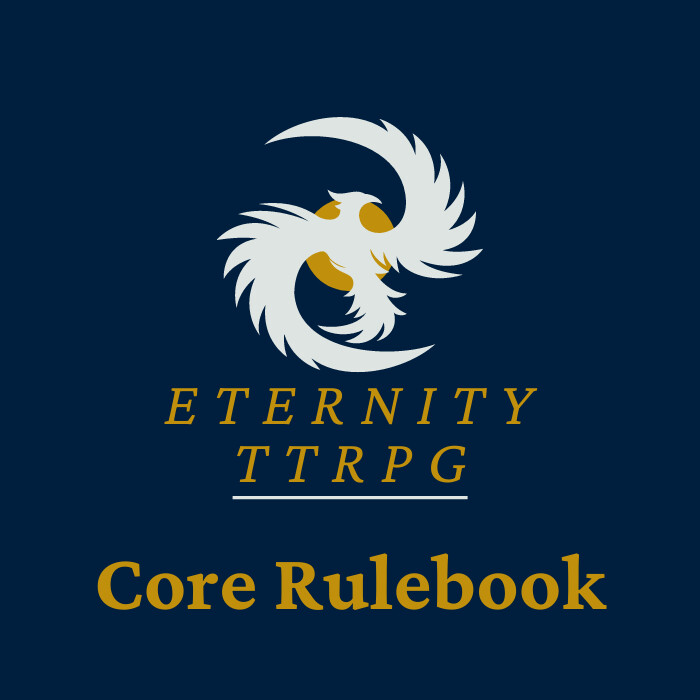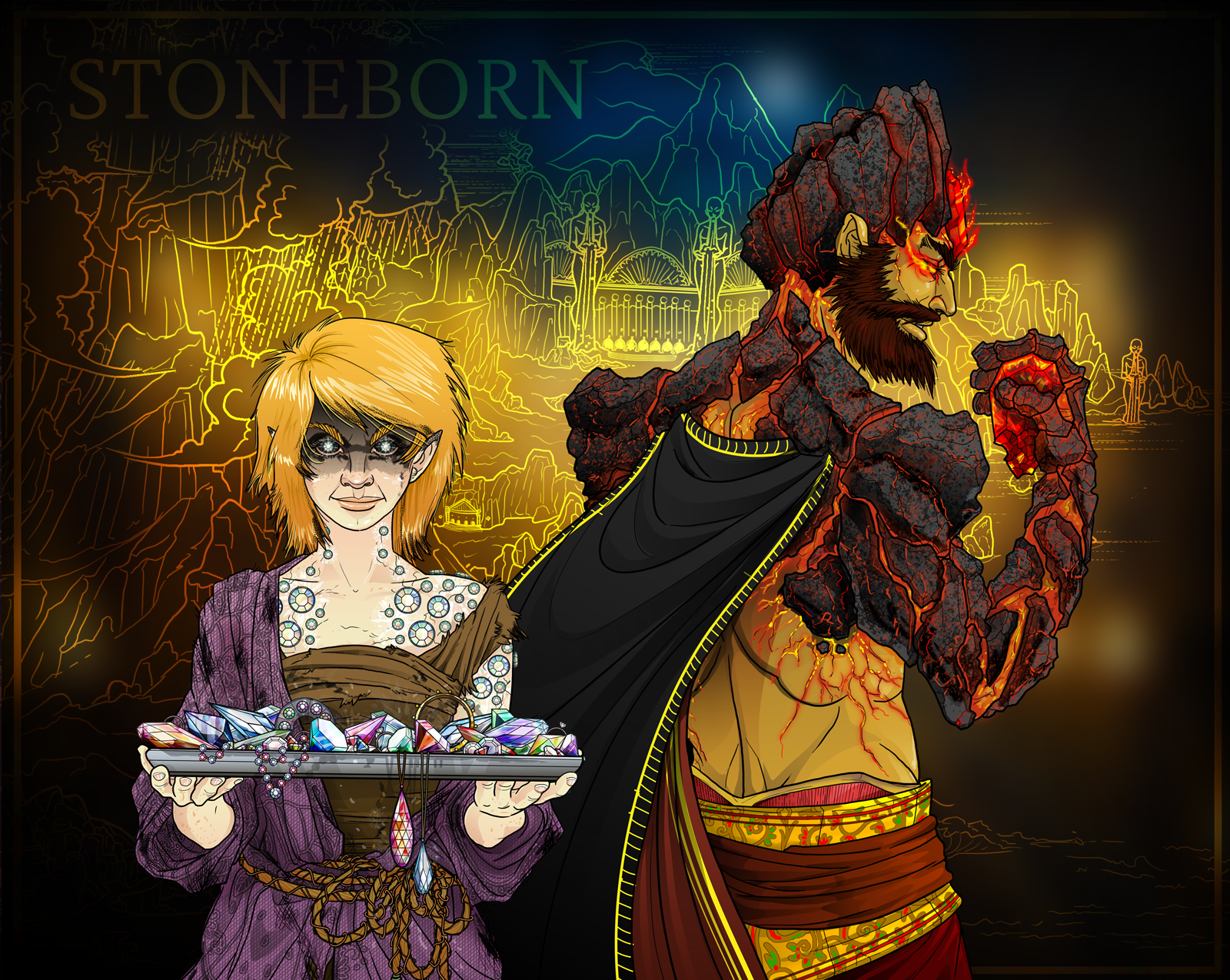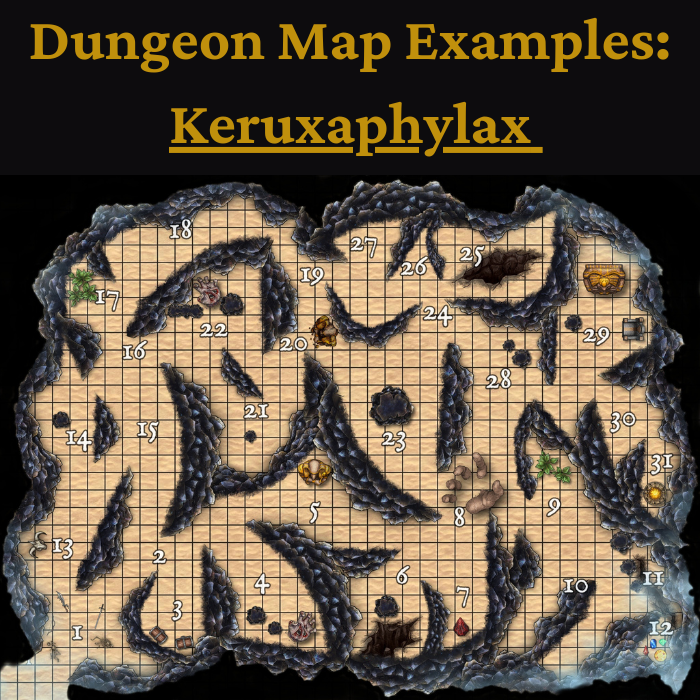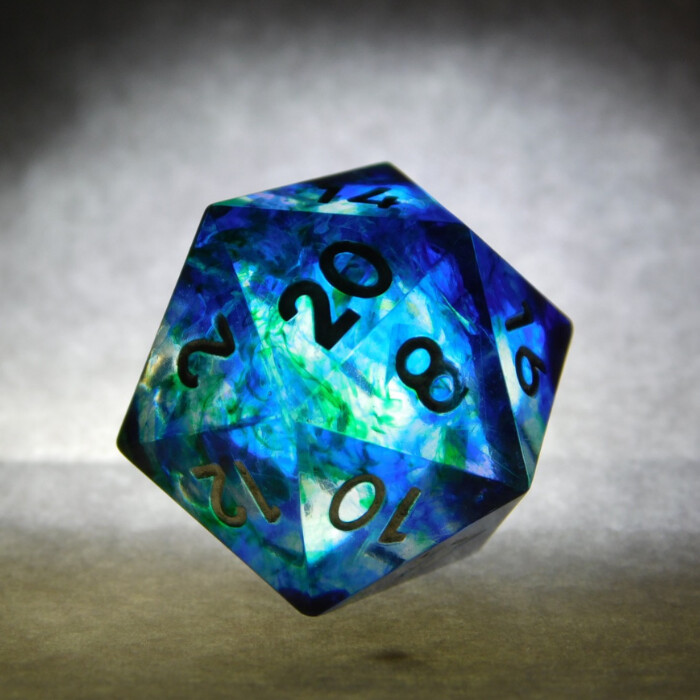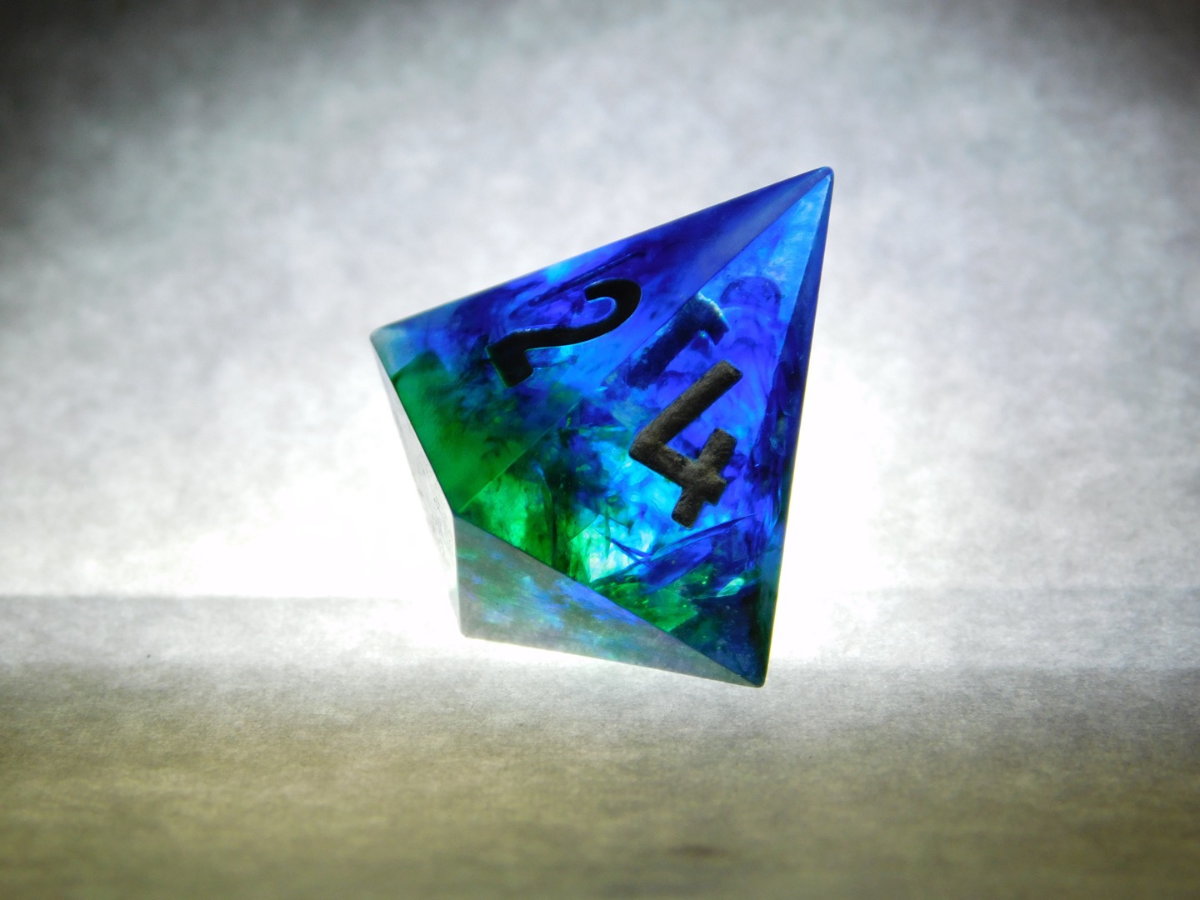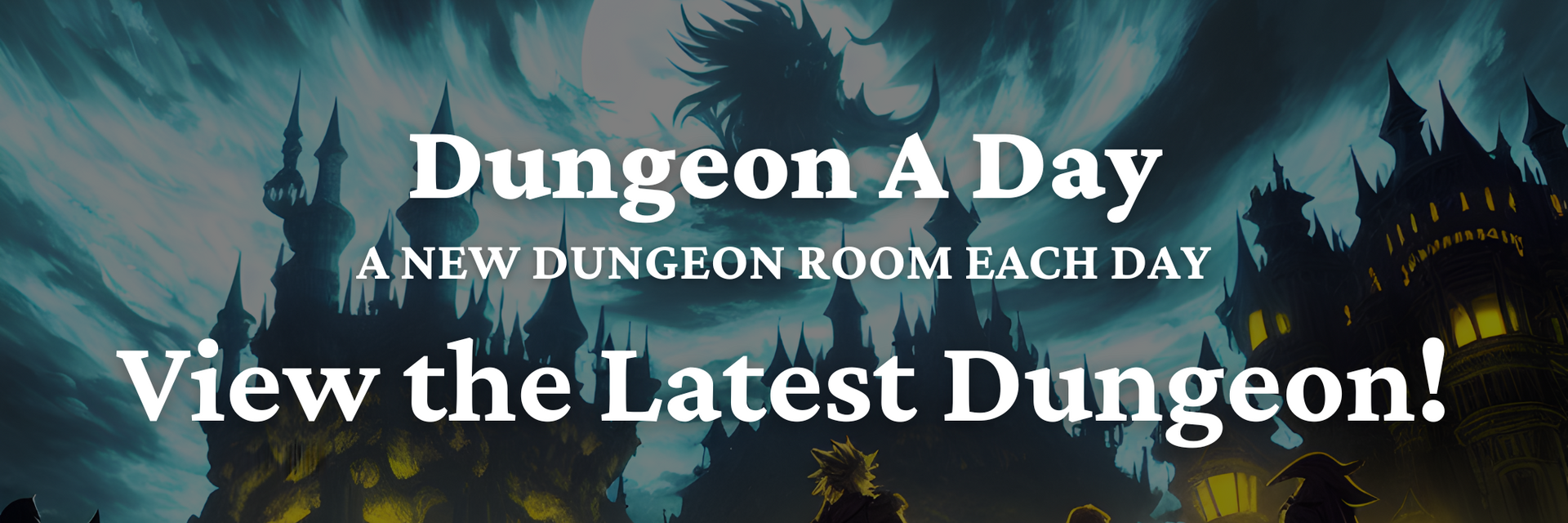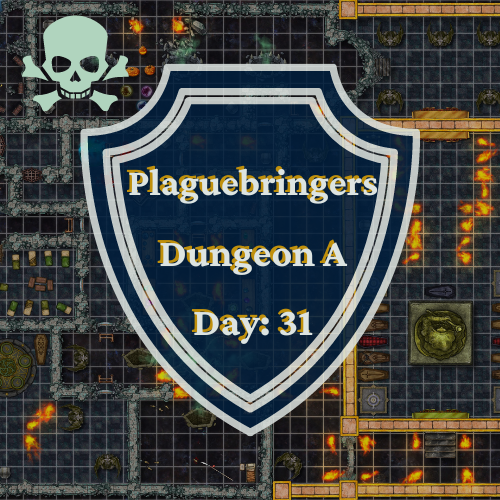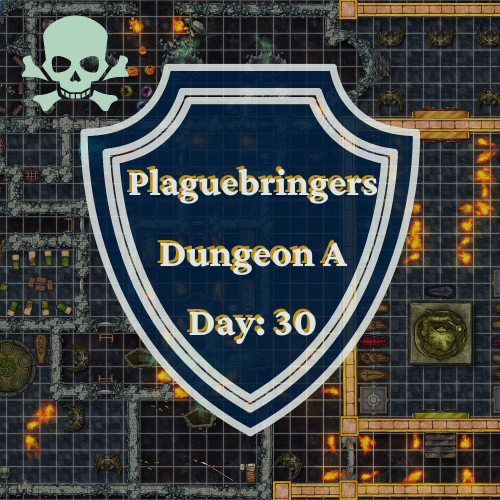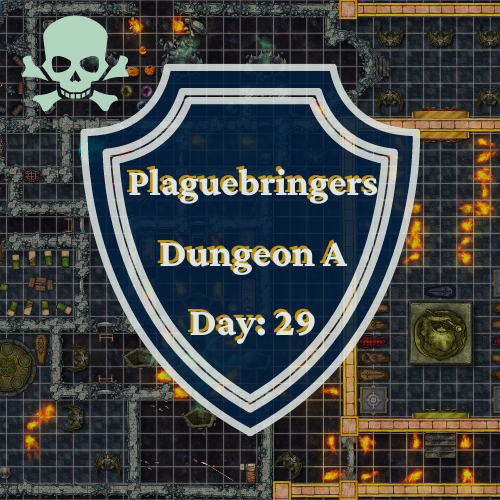Sacred Flame 5e - Dominate Demons and Undead
Sacred Flame 5e is one of those old-but-gold spells in D&D. If you have the experience of being the cleric or warlock of your party, you’ll probably agree with me.
Sacred Flame 5e is a spell that turns up the divine heat on your adversaries. Cast it within 60 feet of your target, and you’ll scorch and singe your way to victory with this vengeful power of light.
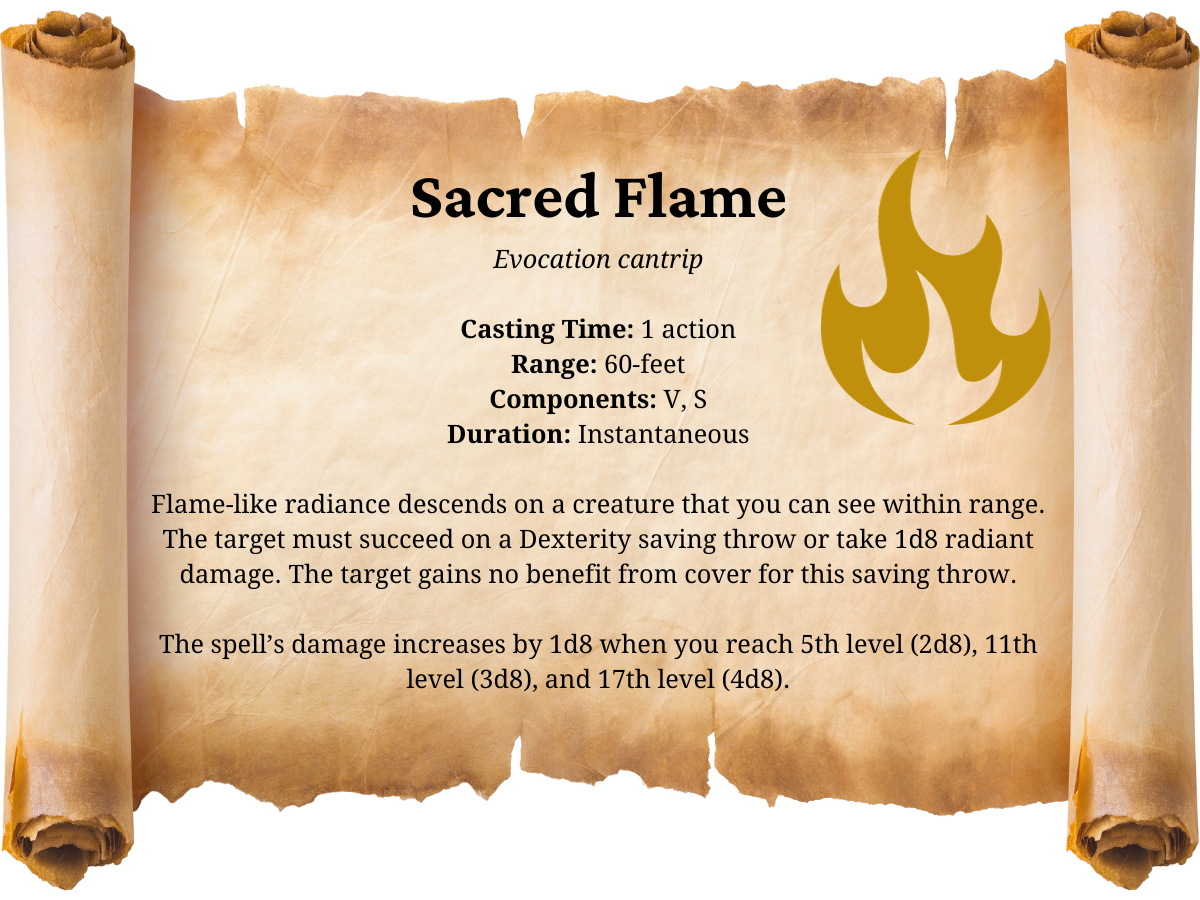
Sacred Flame 5e Spell Details
Cantrip Evocation
Casting Time: 1 action
Range: 60 feet
Target: A creature that you can see within range
Components: V, S
Duration: Instantaneous
Primary Classes: Cleric
Flame-like radiance descends on a creature that you can see within range. The target must succeed on a Dexterity saving throw or take 1d8 radiant damage. The target gains no benefit from cover for this saving throw.
This spell’s damage increases by 1d8 when you reach 5th level (2d8), 11th level (3d8), and 17th level (4d8).
Sacred Flame is an effective spell to have when you’re economical about the spells you cast. Since it’s a Cantrip spell, you won’t spend spell slots. You can keep casting even when your other spells run dry, allowing you to deal damage from a range, and without needing to run towards your enemies.
In short, the effects of this classic spell are simple enough — it burns your enemies to oblivion. However, is there more to it than that? You bet.
What Is Sacred Flame 5e?
Sacred Flame is in the 5th edition and earlier iterations of D&D, so you’ll find it in the D&D Player’s Handbook, given its mainstay status.
As in the earlier editions, Sacred Flame in the 5th edition of D&D is a Cantrip spell. As a Cantrip, it’s a low-level spell that clerics and other magic-wielding characters can cast an indefinite number of times.
Sacred Flame 5e has a radiant effect — not fire. Why does this distinction matter? The spell’s radiant damage and effect make it particularly effective for campaigns that feature many undead opponents, and its damage is not reduced by a target’s fire resistance.
Though Sacred Flame's damage isn't incredible, trust me - you won't need passive perception to notice the overall value this spell can bring to your character.
What Classes Can Cast Sacred Flame?
Here's a good way to start your next DnD character ideas or concepts - pick a party where at least someone has access to either Sacred Flame, or at least access to dealing some form of radiant damage. You'll be happy that your party rounds out in this important way, when the time comes.
By default, clerics have full reign over Sacred Flame 5e. However, keep in mind that the amount of damage a cleric can dish out with Sacred Flame 5e depends greatly on the character’s level. The higher the level, the higher the radiant damage the spell will have on any unfortunate opponent.
Does your party lack a cleric? Don’t worry. Other classes are capable of learning the spell, mastering it, and using it to full devastating effect. Here are the other classes that can cast Sacred Flame 5e.
Paladins
A Cantrip spell like Sacred Flame 5e is effective for undead enemies and demons — just what a warrior of light like a paladin needs.
Paladins are among several magic-wielding classes that are capable of learning and using Sacred Flame 5e. If our party has a paladin that has learned the spell, you’ve got someone with close-quarter abilities coupled with the ability to deal radiant damage from a distance. Great combo.
I particularly like the idea of a warforged 5e paladin using Sacred Flame, as they gain added durability from their race which can help out a lot for the general in-your-face style of battle I'm talking about here.
Warlocks
Warlocks can also acquire Sacred Flame 5e. Because warlocks are masters of magic and spell-casting, they’re more versatile in their use of Cantrip spells than other mix-type classes, like paladins. Warlocks may become one of, or the most versatile spell-casting class in your party if they add Sacred Flame 5e to their arsenal, as it allows them access to more spell damage types.
While we're talking about optimization, as well, I'd recommend some combination like an Eladrin 5e warlock. That way, you'll gain the "Fey Step" racial trait, which lets you move in and out of combat more easily. Combine that with the varying spell damage type that Sacred Flame offers, and you'll be in a good place as far as versatility is concerned.
Sorcerers
Lastly, we’ve got sorcerers. Sorcerers boast innate magical abilities due to their connection to the magical forces of the universe. Despite their innate abilities, they lack certain spells. One of these spells – normally – is Sacred Flame 5e.
Basically, not every sorcerer can acquire the spell. However, when a sorcerer gets this spell down, the party to which the sorcerer belongs will be formidable, to say the least.
Sorcerers can cast Sacred Flame without a verbal component. This means that Silence 5e does not affect the sorcerer’s ability to scorch their foes with radiant fire.
Best Uses for Sacred Flame
As a single-target spell, Sacred Flame 5e works on creatures within 60 feet of the caster. Spell-casters technically can’t use the spell on objects or obstacles.
The spell may inflict significant radiant damage on creatures, depending on caster level. In particular, Sacred Flame 5e works best against enemies that have a low tolerance against radiant damage, like undead enemies such as zombies, skeletons, and even vampires.
Sacred Flame 5e also works against devils and demons, so have this spell handy when your DM comes up with the quest idea for your party to ventures into the Abyss.
Is Sacred Flame 5e a Good Spell?
Always remember that in games like DnD, cantrips are basically a spell-casting class’ main method of dealing ongoing damage, much in the way that a barbarian swings a sword. So, in terms of raw damage, no, sacred flame is not a “good” spell, when compared to spells that actually take up a spell level slot.
However, Sacred Flame 5e is an effective spell if you run out of spell slots, or against demons and undead enemies, in general. It can be an especially useful spell to have if you encounter these kinds of opponents regularly.
Undead Foes
Sacred Flame works for two reasons — and both concern undead enemies. Think of Sacred Flame as your TPK avoidance strategy, so far as fighting undead is concerned.
First, undead enemies like zombies are vulnerable to radiant spells like Sacred Flame. Second, these types enemies have low dexterity scores. Why does this matter?
Whenever a spell-caster casts Sacred Flame 5e, the only way for a target to prevent taking damage is by performing a Dexterity Saving Throw. Regularly succeeding on Dexterity Saving Throws is only possible for creatures with high dexterity scores — something undead enemies often lack.
Whenever a cleric or paladin casts Sacred Flame, the spell will almost always inflict damage on undead opponents, and will usually benefit from increased damage, once the spell hits.
So, is Sacred Flame “good”? I think it mostly depends on the situation. It’s always “good” to have the ability to deal radiant damage at your disposal. Against an enemy (such as the undead) who isn’t weak to radiant damage though, Sacred Flame is probably mediocre at best.
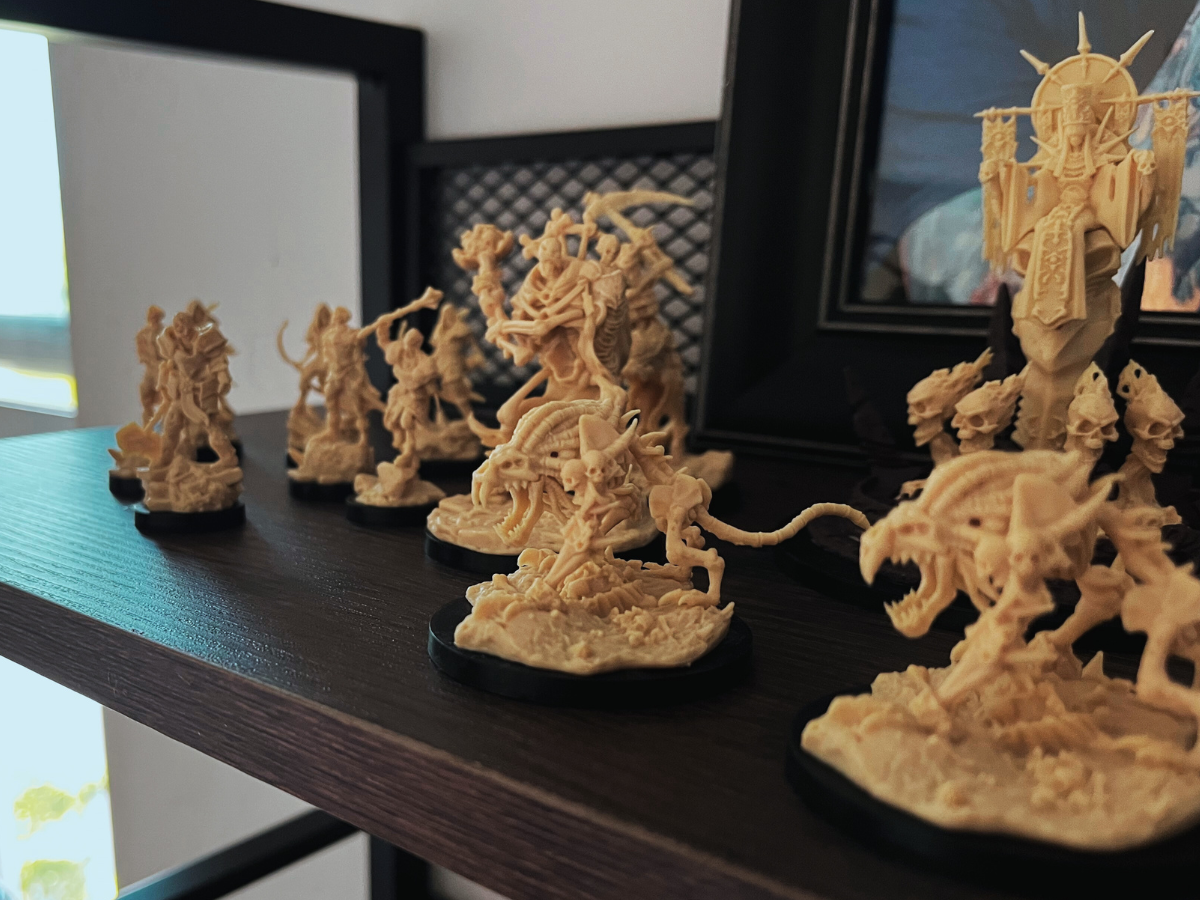
Behold, the undead horde - this version includes undead wolf things, with their Lich Queen. Unpainted, but that just leaves more fun to come.
Sacred Flame 5e Strategies
With Sacred Flame in your spell toolkit, you can gain the upper hand in your next D&D game. Here are some of my favorite tactics for using the spell.
Set the “Clumsy” Ablaze (Everyone’s Go-To Tactic)
One of the most common yet effective ways to use Sacred Flame is to cast it on low-dexterity enemies. For the most part, enemies that fit the bill include zombies and skeletons. Once you cast Sacred Flame 5e, your low-dexterity opponents won’t be able to succeed at their Dexterity Saving Throws, to protect themselves. As a result, you set them ablaze and leave a trail of scorched zombies and skeletons in your wake.
If you've ever wondered about how to write a D&D campaign, by the way, I recommend starting with some fun concept such as having the party mow down hordes of undead - which of course, fits in perfectly with Sacred Flame. Win, win.
The Old Sun-and-Done Approach
Many opponents are particularly vulnerable to radiant damage. Besides undead enemies, vulnerable opponents also include demons and demonic beasts.
When you cast Sacred Flame on these demonic baddies, you’ll give them their dose of holy sunshine — burning them to a crisp.
Keep in mind though that not all opponents are vulnerable to Sacred Flame’s rad radiance, but the spell should do well against the following enemies:
- Shadows
- Flying Horrors
- Puppeteer Parasites
- Shadow Demons
- Gideon Lightward
- Auril’s First Form
And by the way, if you're ever trying to think up some DnD One Shot ideas, why not start with the concept of Sacred Flame and undead/ demons? Maybe that can act as a starting point for some fun inspiration.
Plan B: When Other Spells Fail
Did your paladin or cleric just dish out fire and cold spells only for the enemy to still come at you smiling? When all else fails, Sacred Flame 5e is an excellent fallback option.
Sacred Flame 5e still inflicts damage on enemies who are immune to fire damage (or other common damage types that are non-radiant, for that matter). Just remember that Sacred Flame deals radiant damage (not fire damage). And when it comes to D&D, having access to multiple damage types can be a life-saver.
When you’re in a demonic realm battling undead foes who don’t mind the heat or cold, singe them with Sacred Flame 5e’s holy light!
For Close-Range, Damage-Dealing Action
Sacred Flame 5e is effective up to 60 feet in range. This means that any undead or demonic opponent that gets within 60 feet of your party can fall victim to the spell.
60 feet isn’t a long distance, exactly, but it isn’t terribly short, either. An effective way to use the spell is to maximize its range at the start of a fight, and then switch to using it during close-quarter situations, when needed.
This is where a paladin comes in.
A paladin is one of the most effective classes for close-quarter combat in D&D 5e. With Sacred Flame 5e, your paladin will dish out physical attacks and deal damage targets who are just out of reach for a Maul or Greatsword.
If I really had to say how to play this strategy, too, I'd recommend buffing the paladin with Haste 5e. That way, they have additional speed, AC, and bonuses to saving throws for when they get right in the action.
Scorch the Undead and Demonic Enemies
Sacred Flame 5e is one of the best Cantrip spells your cleric or magic-wielding character can learn, master, and cast. It quickly dispatches undead and demonic opponents as they fall prey to the spell’s instant radiant damage effect.
Sacred Flame can come in handy for your next D&D game, especially if you’re heading into demonic terrain. Have this spell ready for your
DnD campaign, and you’ll keep the undead and demonic hordes at bay.
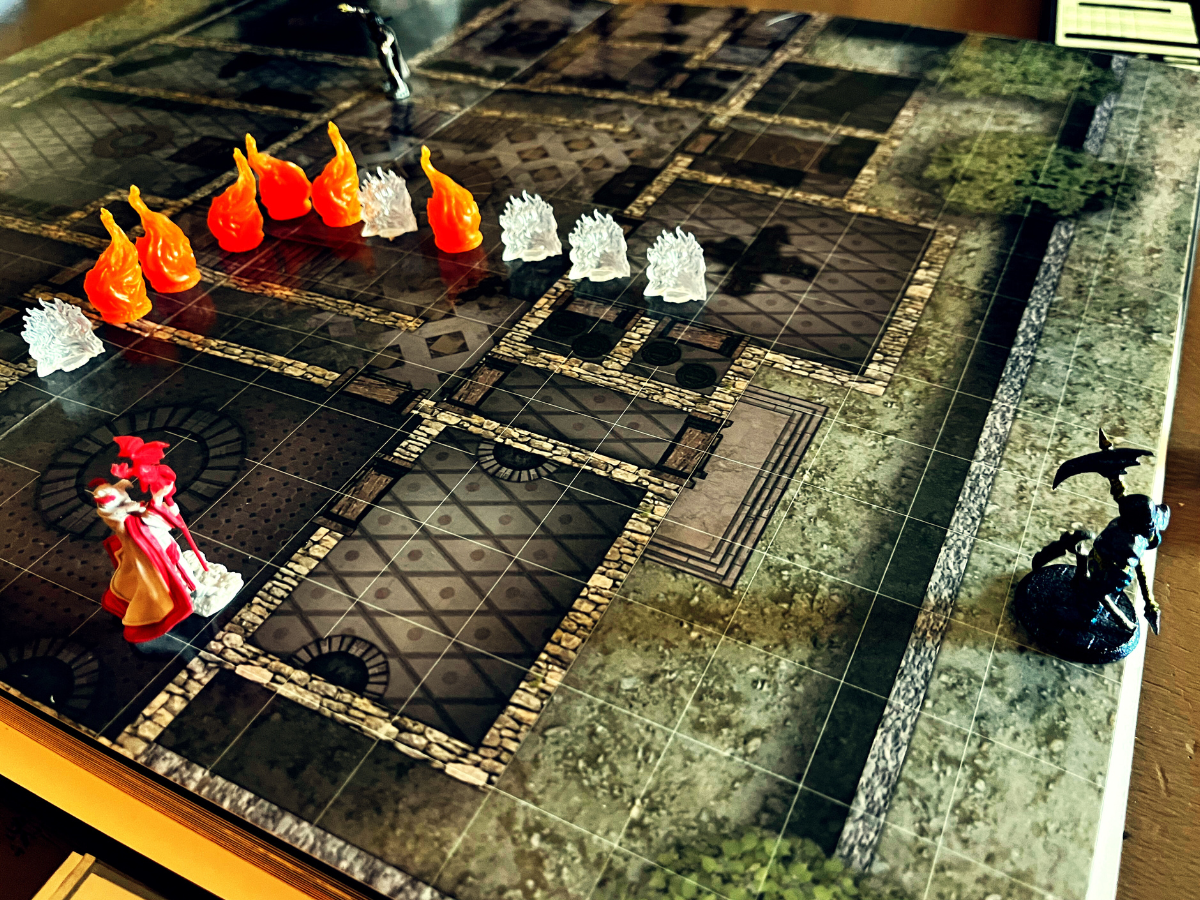
Dungeons like this one are often the perfect opportunity to flex your Sacred Flame 5e skills against waves of undead and demons.
Sacred Flame in D&D 5e vs. Eternity TTRPG
In D&D 5e, Sacred Flame is a pretty basic spell. It is a cantrip, of course, so the spell’s simple effect makes sense.
Basically, Sacred Flame gives you a 60-foot range to deal minor radiant damage (low enough damage that a single cure wounds 5e spell is probably enough to more than heal its effect). Radiant damage is most effective against undead and demons, and Sacred Flame is most effective against low-Dexterity foes.
At the end of the day, that’s all there really is to it.
In the Eternity TTRPG Game System, the equivalent of radiant damage is “light” damage, which is effective not only against undead and demons, but all “Shadow Aura Units,” which could be actually just about anything.
Light and Shadow Aura Units
Eternity TTRPG does not have a purely “set” bestiary, like D&D 5e. As you probably know, D&D takes the kind of approach where DMs choose monsters that match the party’s level, and those monsters have set stats, skills, and spells, etc.
For Eternity TTRPG, Game Designers (the equivalent of the DM) creates foes for the party by mixing together their level, general type, and then if desired, giving them a “class” (just like players get) that comes with its own preset turn-by-turn spell/ ability instructions.
Game Designers can thereby give any monster/ enemy a “Shadow Aura” – by making them a Fallen Paladin, Revenant/ Witch, or Vampire Mage. Then, whenever the party’s heroes deal light damage to those enemies, that damage is increased.
Fun Monster Examples
Eternity TTRPG offers a great deal of customization for players, especially when it comes to world creation, storytelling, and of course, combat design.
Image the heroes coming across a chimaera – a unique monster battle that you’ve been building up to for a long time.
Instead of just using a generic “Chimaera” stat block, however, you custom-design its stats and “class,” using the simple monster-creation process that Eternity TTRPG provides.
Engaging in battle with the chimaera, your party is shocked to discover that the beast deals shadow damage with its sharp talons, and is weak to the sage’s holy spells.
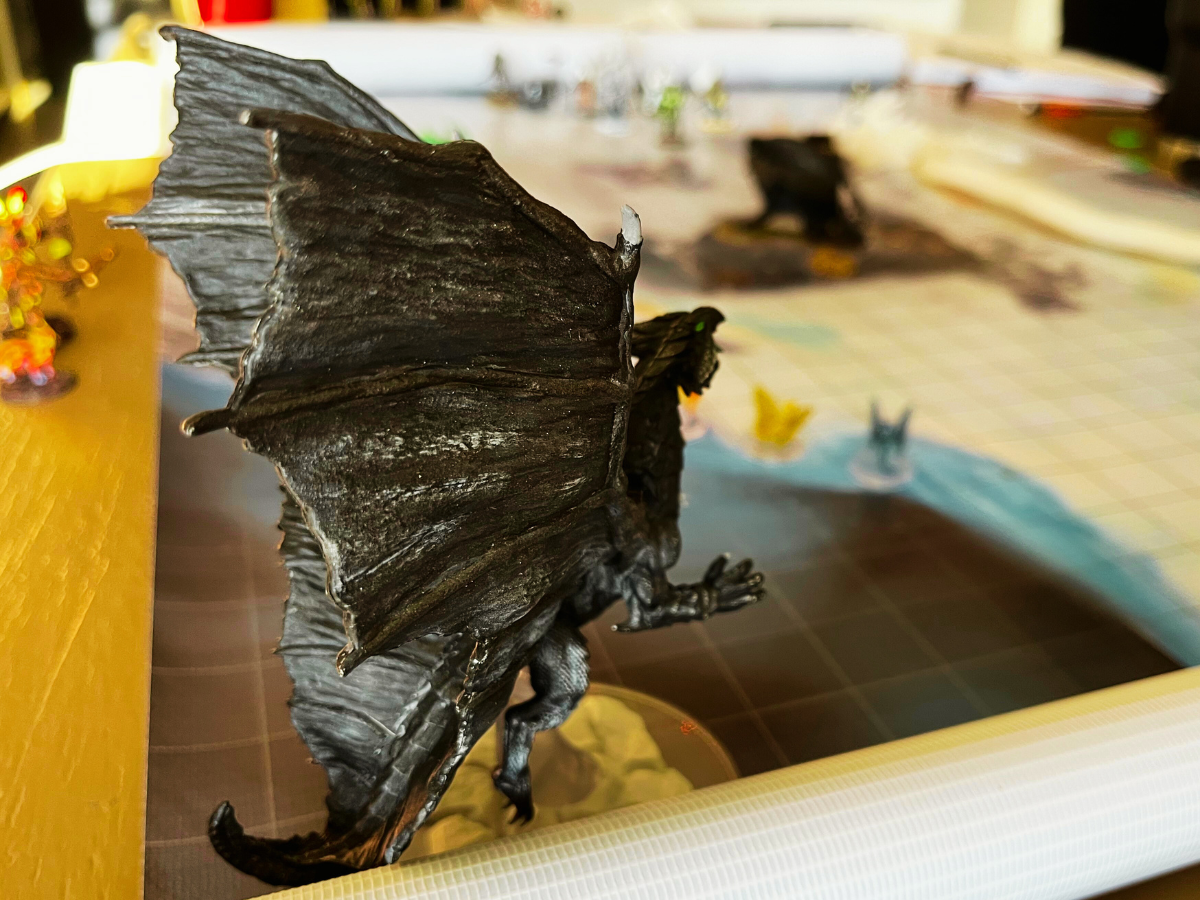
Why not turn your adventure's dragon or other iconic monster into something your party wouldn't ever expect?
What Classes can use Sacred Flame Effects?
With Sacred Flame 5e’s equivalent in Eternity TTRPG being “Light Damage,” there are three primary classes that can always use this type of effect:
- Paladin
- Sage
- Witch Hunter
Additionally, two other classes may be able to deal light damage, under the right circumstances/ player choices:
- Dragon Knight – temporarily, by also making themselves vulnerable to shadow damage.
- Monk – incapable of dealing light damage, but they can protect themselves against either light or shadow damage.
Paladin – Core Class Ability
Holy Blaze: Weapon Range, +5Strike Bonus vs. Dodge or 4Range, +5Faith vs. Will. If this attack hits, and the target attacks any target but you during their next 2turns, they take 1light damage (deals 2damage to Shadow Aura Units). “Holy Blaze” cannot Double-Hit or give a Block.
Even if this Ability misses, you also gain one (1) stack of “Divine Defender,” which increases your hit chance with certain
paladin Abilities. Stacks are not consumed when used, and you can gain up to two (2) stacks. When using “Holy Blaze,” you gain +2Strike Bonus (SB) and +2Faith (Fa) for each stack of “Divine Defender."
1 stack, +2SB/Fa (for a total of +7SB/ Fa); 2 stacks, +4SB/Fa (for a total of +9SB/ Fa).
- (Divine Sword): If this Ability hits, it also deals 1damage right away.
- (Healing Light): Even if this Ability misses, heal yourself or an ally in 4Range +1HP. This Critical allows the affected target to heal 1HP above their normal max HP. Healing from this effect also Fatigues the target, giving lowered Resilience, Dodge, and Will for 1Day Duration (can stack without limit). Roll d20 to determine the amount of Fatigue.
- (Self-Sacrificing): Weapon Range +4, +5Strike Bonus vs. Dodge, or 8Range, +5Faith vs. Will. You also have these same Range bonuses when using this Ability, for Battle Duration.
Sage – Core Class Spell (1st Option)
Blessed Light (Magic): 4Range, the target heals +1HP. This Spell allows the target to heal 1HP above their normal max HP. This effect also Fatigues the target, giving lowered Resilience, Dodge, and Will for 1Day Duration (can stack without limit). Roll d20 to determine the amount of Fatigue.
- (Darkness and Light): Also, up to 3 enemies in 4Range of your target, -7Faith vs. Will, deals 1light damage (deals 2damage to Shadow Aura units). This critical cannot Double-Hit or give a Block.
- (Secrets of the Ancient Tomes): You can still cast this Spell while Dazed, Locked, or Silenced. Also, roll d20. If you roll 15-20, you also remove that effect from yourself.
- (Powers of the Eternals): +2HP. This Critical allows the target to heal 2HP above their normal max HP. This effect also Fatigues the target, giving -3Resilience, -3Dodge, and -3Will for 1Day Duration (can stack without limit).
Witch Hunter – Core Class Ability
Inquisition: after you use this ability on yourself, gain +1Initiative, plus an additional +1Initiative every turn (can stack to +7Initiative). Your weapon attacks also deal light damage (dealing 2damage to “Shadow Aura” units) while “Inquisition” is active. You can instead choose to continually maintain this ability for 3Inspiration.
(Dazed): gaining additional Initiative each turn from “Inquisition” is temporarily interrupted while you are Dazed.
- (Curse-Ender): You also heal +1HP. This critical allows you to heal 1HP above your normal max HP. Healing from this effect also Fatigues you, giving -1Resilience, -1Dodge, and -1Will for 1Day Duration (can stack without limit).
- (Zeal): You are also immune to the next three (3) Speed-, Initiative-, or Range-reducing effects used on you (this effect still applies if you intentionally Immobilize yourself using “Divine Frenzy”), or alternatively, you can automatically remove one (1) Speed-, Initiative-, or Range-reducing effect from yourself.
- (Blade and Heresy): You may also take an additional non-critical Instant Action the next time you attack a target. You can instead choose to continually maintain this critical for 5Inspiration (and 0Wisdom), until this effect takes place.
Dragon Knight – Light Damage Option
Chromatic Breath: this ability can only be used by the “Dragon,” as a breath weapon.
4Range, Faith vs. Will, deals 1damage. When you use this ability, you must give it one of the following elements:
- Fire: deals +1damage to cryomancers.
- Ice: deals +1damage to pyromancers.
- Light: deals +1damage to shadow aura units.
- Shadow: deals +1damage to light aura units.
This ability also causes both “Dragon” and dragon knight to become immune to your chosen element for 1turn. However, you also count as being the following type of unit for 1turn when it comes to weaknesses.
(Double-Hit): deals 2damage.
- (Wings of Death): Up to 3 enemies in 4Range.
- (Knight of the Blood Oath): Even if this ability misses, any target in 4Range, +7Faith vs. Resilience, Taunts the target for 2turns.
- (Memories of Tarscisia): Move up to your Speed value before or after using this ability. You can also move up to 4Speed before or after using this ability, for Battle Duration.
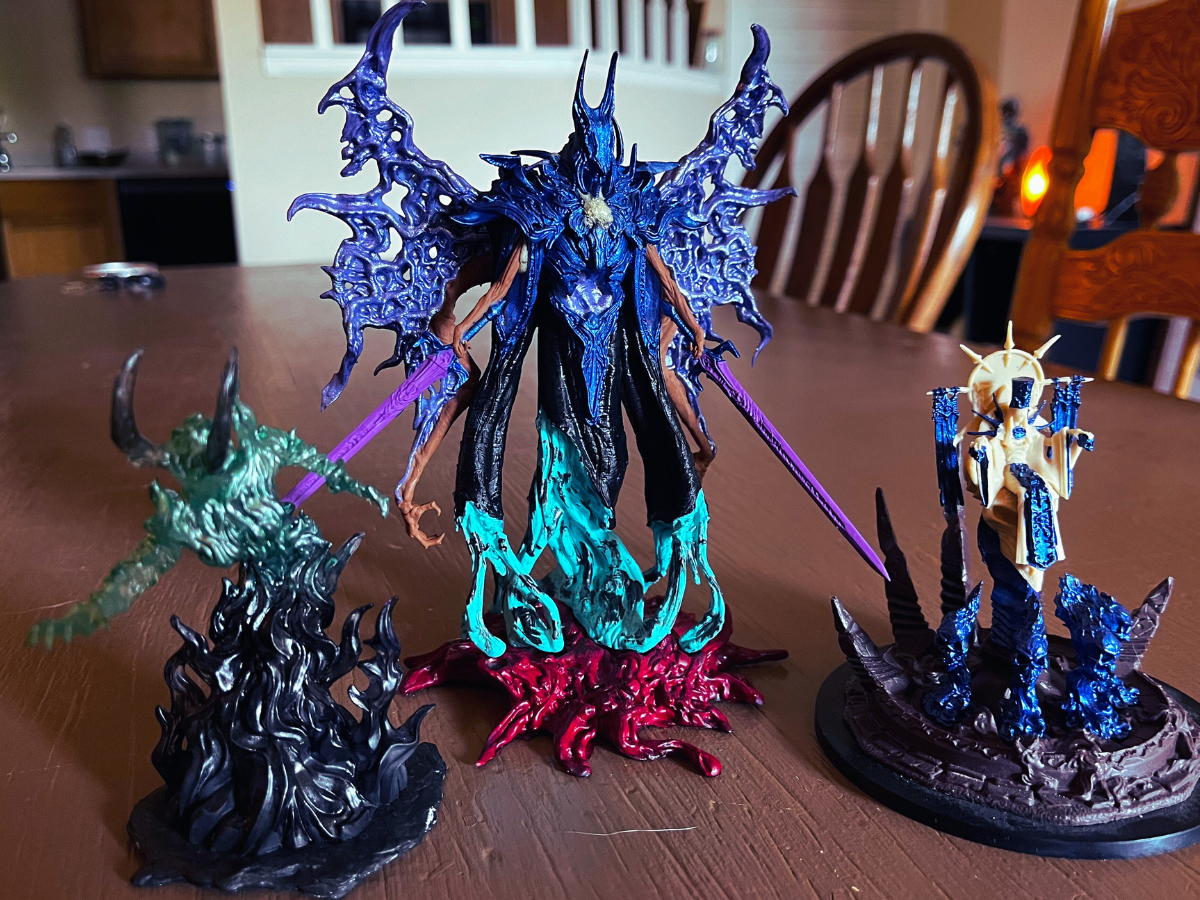
Games are better when you have a host of monsters/ villains with light damage weaknesses, or other unique ways for players to defeat them.
Monk – Specialization/ Critical Option (Divine Body)
If you do not use a weapon, shield, or armor, choose one of the following permanent bonuses. You can also apply rare metals and gems directly to your body (armor) and fists (weapon). “Divine Body” selections cannot Double-Hit or give a Block.
Void Body
Permanently gain +8Strike Bonus. When you finish a Move Action adjacent to an enemy, roll d20. If you roll 12-20, roll +7Strike Bonus vs. Resilience, Lock for 1turn. You can only Lock with this ability once per turn. “Void Body” cannot Double-Hit or give a Block.
Chaos Body
Permanently gain +8Initiative. When you finish a Move Action adjacent to an enemy, roll d20. If you roll 16-20, roll +7Strike Bonus vs. Resilience, Daze for 1turn. You can only Daze with this ability once per turn. “Chaos Body” cannot Double-Hit or give a Block.
Eternal Body
Permanently gain +1HP, +3Resilience, +3Dodge, and +3Will. When you finish a Move Action adjacent to an enemy, roll d20. If you roll 12-20, roll +7Strike Bonus vs. Resilience, Taunt for 1turn. You can only Taunt with this ability once per turn. “Eternal Body” cannot Double-Hit or give a Block.
Eternal Specialization Upgrade
You are now permanently immune to light damage. Every turn, roll d20. If you roll 19-20, you automatically heal +1HP to yourself or an ally in 4Range. This critical allows targets to heal 1HP above their normal max HP. Healing from this effect also Fatigues the target, giving -1Resilience, -1Dodge, and -1Will for 1Day Duration (can stack without limit). Once chosen, this critical becomes a passive effect, always active, and cannot be dispelled.
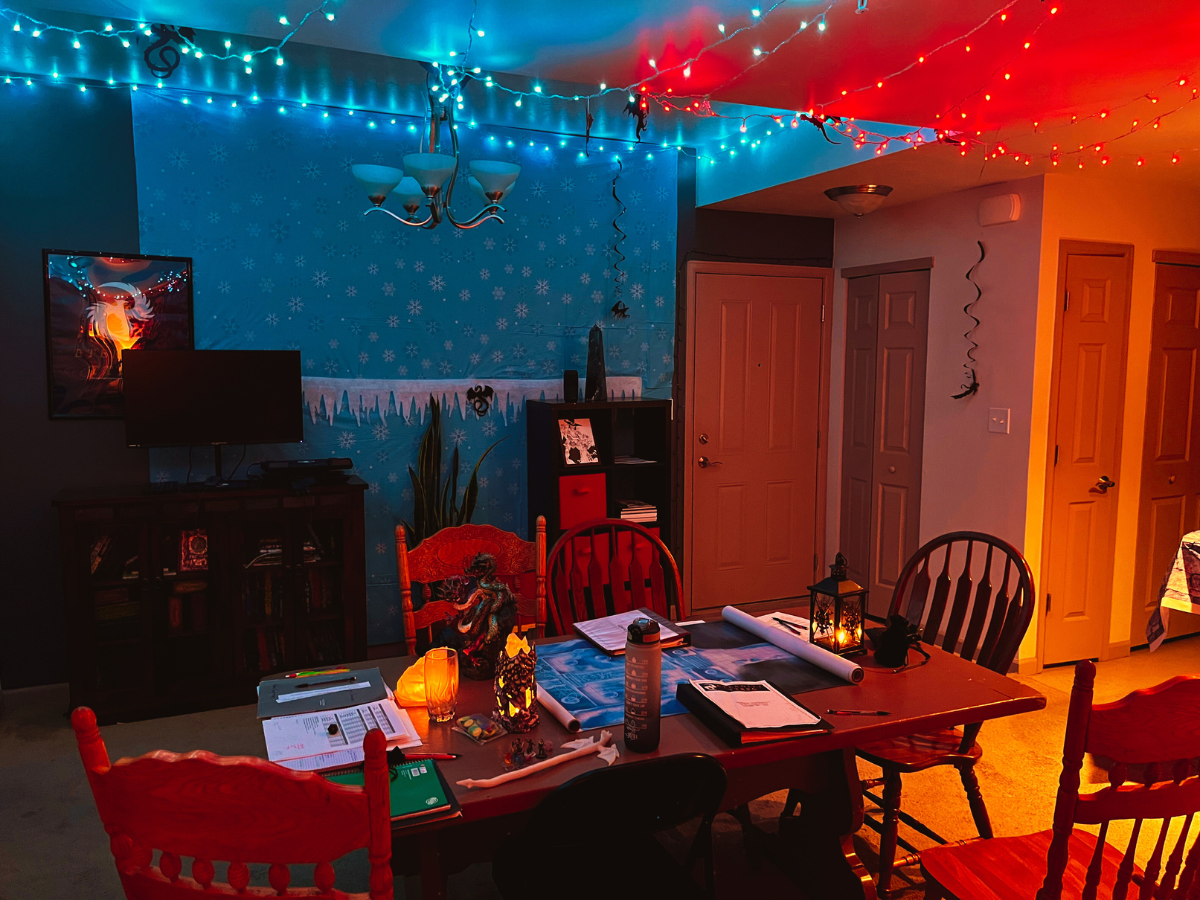
Whatever you do, always do your best to make your game special. You always want to bring your best to the game so you leave your group always wanting more.
Strategies for using Light Damage
As powerful as light damage can be against shadow aura enemies (since damage is doubled), players need to take precautions against taking that same level of damage in return.
The best way to use light damage is to pair it with specific enchantments, as shown immediately below.
Durandal Enchant
4Range, the target’s Weapon gains the light element. Once Enchanted, they have +7Strike Bonus or +7Faith when attacking with their Weapon against targets with a Shadow Aura, for 1Hour Duration. This item has 10-uses.
This effect allows non-light aura units to also deal light damage, without the downside of also being vulnerable to shadow damage.
Of course, the Durandal Enchant does not provide as much offensive benefit as natural light aura units have against shadow aura units, but it’s a wonderful option to maximize the party’s damage against certain foes.
Unholy Armor Enchant
4Range, the target’s Armor gains the shadow element. Once Enchanted, they have +7Resilience, +7Dodge, and +7Will when attacked by the shadow element, for 1Hour Duration. This item has 10-uses.
The unholy armor enchant allows even light aura units to instead take on the equivalent of a “shadow aura,” becoming immune to shadow damage. With this enchantment, players can deal the insane levels of light damage innate to their class without fear from shadow aura classes.
This enchant has the added benefit of not actually providing the user with a shadow aura. This means that though the user is immune to shadow damage, they are then not vulnerable to light damage, as a normal shadow aura would provide.
This important distinction (shadow damage immune vs. having an actual shadow aura) makes the Unholy Armor Enchant one of the best items in the game for light aura units. Though the cost of this item is quite high, it’s benefit is certainly worth the cost.
Try Eternity TTRPG for Yourself
If you're looking to explore a new TTRPG experience, consider taking a look at the Eternity TTRPG Game System. It’s a great alternative to D&D 5e that offers both the depth of D&D and the versatility, for players and DMs.
You can also check out the Eternity TTRPG Game System page to discover a wealth of information on gameplay, races, classes, and numerous resources to help you get started.
If you find yourself intrigued by what you've learned so far, you may consider picking up an affordable PDF copy of the game from the Eternity TTRPG shop.
As a growing company, we value and appreciate your support. We would love to hear your thoughts on the game, and we hope it brings you joy in your gaming adventures.


